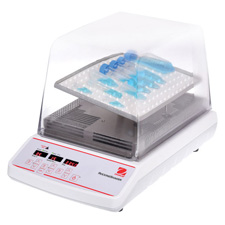| The Home page of ILPI's Safety Data Sheet (SDS) Resource, the leader in SDS information since 1995! | |
| The history and philosophy behind this resource. | |
| A curated collection of books and reference materials concerning Safety Data Sheets and closely related topics. | |
| Paste your plain text SDS into the SDS-Demystifier, and it will be converted into a hypertext-enriched document with links to detailed explanations of each key term. | |
| An extensive list of frequently asked questions about Safety Data Sheets including regulations, content, compliance, and more. | |
| A humorous take on Safety Data Sheet jargon. Fill in the blanks on our entry form to generate a personalized Unsafety Data Sheet to share with your coworkers. | |
| Since 1995, we've maintained this massive curated list of the best places to find Safety Data Sheets on the Internet. | |
| You are here! Way more than a glossary, this hypertext-enhanced resource covers hundreds of SDS-related terms and expert knowledge. Each entry includes both the SDS relevance and links to additional authoritative resources. | |
| Archived results of Safety Data Sheet related polls taken by some of our millions of site visitors | |
| The OSHA regulations behind SDS regulations, including the inspection guidelines and over 400 official interpretations letters under the Hazard Communication Standard | |
| Commercial suppliers of SDS authoring and management software as well as cloud compliance services. | |
| Commercial companies that will create SDS's for your specific needs as well as SDS translation companies. |

Safety signs, banners, and scoreboards? Get yours at Safety Emporium!
Definition
A clastogen is a substance that cause breaks in chromosomes that result in the gain, loss, or rearrangements of chromosomal segments. Clastogens can also cause sister chromatid exchanges, the interchanges and reunions that occur during the processes of mitosis or meiosis (DNA replication).
Additional Info
Clastogens break and/or damage your DNA, the code that determines the function of the cells in your body. If a damaged cell dies, then there may be no further health effect. But if the altered/damaged cell's DNA still functions and is replicated (reproduced; passed on), this may lead to mutagenesis or carcinogenesis. While all gene mutations generally involve clastogenesis, the reverse is not always true - not all clastogens produce gene mutations.
Examples of known human clastogens include certain anti-cancer drugs, benzene, ethylene oxide and inorganic arsenic. X-ray and ultraviolet radiation can also be considered clastogens.
Books Available
NOTE: We may collect a share of sales or other compensation from the links in the following list:
- "Introduction to Cancer Biology 2nd Ed", Paperback, 464 pages, 2023. Estimated price: $53.94. Info and/or order.
- "DNA Repair And Mutagenesis", Hardcover, 1,118 pages, 2005. Estimated price: $57.04. Info and/or order.
- "The Principles of Clinical Cytogenetics, 3rd Ed", Paperback, 569 pages, 2015. Estimated price: $162.36. Info and/or order.
- "The Biology of Cancer, 2nd Ed", Paperback, 876 pages, 2013. Estimated price: $103.00. Info and/or order.
- "Wilson and Walker's Principles and Techniques of Biochemistry and Molecular Biology 8th Ed", Paperback, 2018, 956 pages. Estimated price $51.99. Info and/or order.

Safety Emporium has all kinds of lab equipment such as this incubating rocking shakers and more.
SDS Relevance
If a substance poses a clastogenic hazard, this information will appear in Section 11 (toxicological information) of a Safety Data Sheet. The sheet will explain how you can protect yourself from these hazards and reduce your risk in Section 8 (exposure controls/personal protection).
Obviously, any possible damage to your DNA is a Bad Thing. Treat all clastogens with the same respect you would afford a carcinogenic substance. Use proper engineering controls such as a fume hood whenever possible and always use proper personal protective equipment such as gloves or respiratory protection.
Further Reading
- 5 guidance statements on testing chemicals with no or inadequate genotoxicity data by the Committee of Mutagenicity of the UK Department of Health.
- Clastogen at ScienceDirect, collects articles tagged with that keyword.
- The European Food Safety Authority draft scientific opinion on genotoxicity testing strategies applicable to food and feed safety assessment.
- Chromosomal aberrations, clastogens vs aneugens in Frontiers in Bioscience 2017, 9, 1-16.
See also: carcinogen, cytotoxin, mutagen.